December 06, 2023
Getting up to speed with AI in insurance at the ILC conference
The Catalyst team left the latest I Love Claims conference excited by the possibilities...
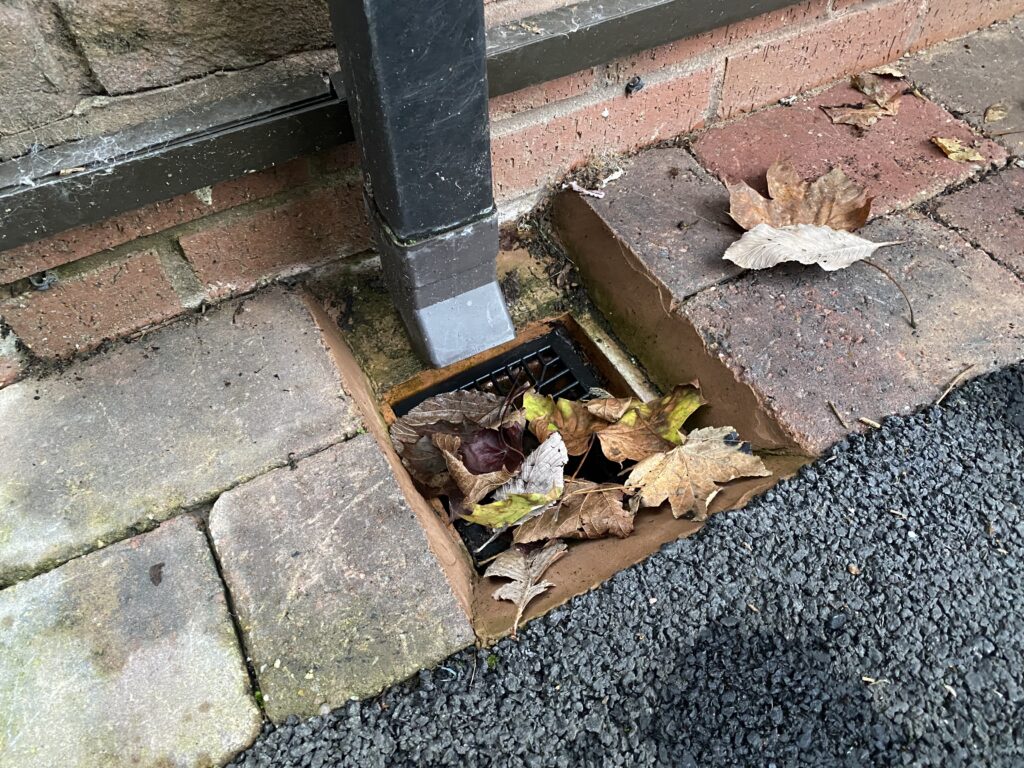
What a lot of people do not realise so readily is that they can quickly and easily make a difference themselves, by carrying out an environment drains and water pipe health check on their homes.
The government and campaign groups both agree we must all do our bit to contribute to the UK meeting its carbon net zero emissions target by 2050. Improving the way we use clean water and manage dirty water is one way households can help.
A very significant bonus for helping to save the planet is that a drain and water pipe health check could also save households hundreds, and sometimes thousands, of pounds.
Reduce your carbon footprint
Here, Catalyst Services UK Managing Director Brad Jackson discusses how to carry out such an environment home health check, and its significance for the fight against climate change – and the cost of maintaining your home.
He said: “Surface water drains, sewers and water supply pipes are mostly hidden out of sight underground, so many home and business owners do not give them as much thought as they should.
“Because of this, defective drain and water pipe systems can be causing major problems, including pollution risks, that property owners may not be aware of, until it’s too late.
“Carrying out these simple drain and water pipe health checks and associated positive actions will help you optimise your clean and waste water systems, and stay alert to potential future problems.
“This, in turn, will help homeowners to reduce their negative impact on the environment by reducing their carbon footprint, and minimising the risk of contributing to harmful pollution incidents.”
Carrying out an effective environment home health check boils down to asking 5 important questions.

This question is all about understanding if your drains are working as they should do. A key consideration is whether all the pipes are connected up correctly, then joined to the main sewer system properly.
If they are not, a drainage misconnection can occur, which can have serious consequences for the environment.
In modern drainage systems, surface water – that is water created mainly from rainfall – is kept separate from wastewater, which can contain human waste or commercial pollutants.
This allows the surface water to be channeled into natural water courses, in some cases after undergoing a filtration process using water holding tanks called interceptors.
Drainage misconnections
It ensures huge volumes of rainwater do not get reach treatment works, which reduces treatment costs. Also the size and scale wastewater pipe systems (pipes that contain human waste are called foul pipes or sewers) can be controlled.
In both instances, this saves a lot of money. It also reduces the amount of material resources and energy needed to treat water, reducing carbon emissions.

Caption: Pictured above, how misconnections can occur: the drainage pipes serving the property on the left are connected properly. The ones on the right are misconnected, with a foul pipe from the toilet connected to a surface drain.
Problems occur when a wastewater pipe is connected to a surface water pipe, or visa versa, either accidently or deliberately. This is called a drainage misconnection
And householders can create misconnections in a number of ways. A common one is to move a washing machine into a shed, outhouse or garage, and plumb the wastewater into the nearest drainage pipe.
If this is a surface water pipe, as it can easily be, as it may be located in a garden away from the house, it means wastewater that contains detergents, plastic and other waste matter, could quickly find its way into water courses.
Incompetent builders
Water used for washing is known as grey water and should be disposed of down foul drains. Detergents are pollutants and can harm wildlife.
Grey water may also contain micro-particles and fibres of plastic from clothing, which also pollutes marine ecosystems and can even end up in oceans hundreds of miles away.
The same problem applies to sinks installed in outhouses and garages, or when toilets are installed in garden rooms, a growing trend in the UK.
Instead of installing a foul drain back to the sewer pipe close to the house, unscrupulous or incompetent builders may plumb a toilet into a surface water pipe.
Doing so is illegal and so could expose the property owner to the risk of court action and fines. At the very least, it would result in costly additional works to correct the problem.
Misconnections – what to do
If you are concerned that there may be a drainage misconnection on your property, you should commission a drainage specialist to inspect the drainage system.
The contractor will identify the location, type, condition and purpose of drainage pipes, chambers and related assets which will show if there are any misconnections in the system.
The drainage specialist can provide a survey report to show where the problem lies and how it can be rectified.
Just as with misconnections, defects in sewer pipes can lead to foul wastewater leaking into the ground and, potentially, into water courses.
Cracks in pipes or displaced joints can allow sewage to seep into the ground. If the pipe is located near a water course, the contaminated water from the sewer pipe could then leach into the stream where it could disrupt the ecosystem and threaten wildlife.
Blockages in sewer pipes add to this problem worse by making defects worse or allowing pressure to build in the pipe, forcing sewage through any cracks.
Problems go unseen
The risk of this happening can be increased if additional development puts the wastewater system under increased pressure, even overloading it at times.
It is possible that this process can go unnoticed for quite a long time. If there is not a total failure of the drainage system, sewage can leach into natural water systems for months, if not years.
Property owners need to be able to spot some tell-tale signs. Bad smells and slow draining of sinks and toilets are signs that wastewater could be backing up in sewers.
In some cases, a damp patch appearing in a drive, the ground becoming softer or the growth rate of vegetation increasing along pipe runs can also indicate that water is seeping into the ground.
A sign of this may be more lush grass growth on a patch of lawn, indicating the sewer beneath is discharging water into the ground.
Off-mains drainage system maintenance
Thousands of homes across the UK without a mains sewer connection manage their waste with cesspools, septic tanks, sewage treatment plants, and associated assets, including soakaways.
Just as with sewer pipes, these need to be used and maintained properly to prevent problems that can pollute the environment. If tanks and associated pipes become damaged, raw sewage can seep into the ground and, from there, into water courses.
The risk of this happening is increased if tanks are not emptied at the correct intervals, as well as cleaned, maintained and repaired when necessary.
Anti-pollution regulations
Most manufacturers recommend tanks should be emptied annually, while sewage treatment plants, which have motors and other moving parts, should be serviced annually.
Households with tank systems need to take into account legislation governing their design and use, notably the general binding rules for small sewage discharge to the ground .
These apply to England – there is similar guidance for Scotland, Wales and Northern Ireland.
Regulations approved in 2015 to tighten the discharge of wastewater into the ground came into force at the start of 2020. In a nutshell, they no longer allow wastewater from a standard septic tank to be discharged directly into water courses.
Get expert advice
Instead, the water must be discharged into a drainage field, which must be at least 30 metres from the nearest water course.
The regulations are complicated, and the cost of making changes to off-mains wastewater systems are significant.
Therefore, the best course of action is to obtain expert advice on whether a specific system is compliant, and working optimally, to both protect against the risk of polluting the environment and against regulatory action by the Environment Agency.
This is particularly important when buying a property. The seller does not have a legal duty to inform the buyer about the condition of off-mains drainage assets, or liabilities associated with them. It is up to the buyer to carry out the necessary investigations and understand any risks.
Two of the biggest environmental risks associated with sewer systems are FOG – that’s fats, oils and grease – and wet wipes.
FOG is the waste disposed of down drains – inadvertently or deliberately – after cooking. It combines with other waste in sewers to form a congealed and often very hard mass of material which sometimes get so big they are defined as fatbergs.
Another key ingredient in fatbergs and millions of smaller sewer blockages is wet wipes. Most of them are primarily made from plastic. In 2017, UK Water concluded that wipes made up an astonishing 93% of matter creating sewer blockages.
Huge cost of blockages
It is a major problem now being highlighted by many environmental groups and initiatives, including Unblocktober , the UK’s first month of action campaign dedicated to protecting sewers and seas.
There are three key ways wipes and FOG (much of the waste generated by households) damage the environment and contribute to global warming.
Firstly, water companies spend over £100m a year tackling blockages, including fatbergs. This requires the use of additional resources and energy, for example through filtration systems at water treatment works and the processing of waste, which increases their carbon footprint.
Secondly, the wipe and FOG blockages sit inside our sewers reducing their capacity. During periods of heavy rainfall, especially in urban areas, combined sewers become overloaded, allowing sewage to flood into the natural environment.
We all want water companies to do more to stop sewage being discharged into rivers and the sea when this happens. But if our sewers weren’t clogged with our own personal waste, it would not happen so often.
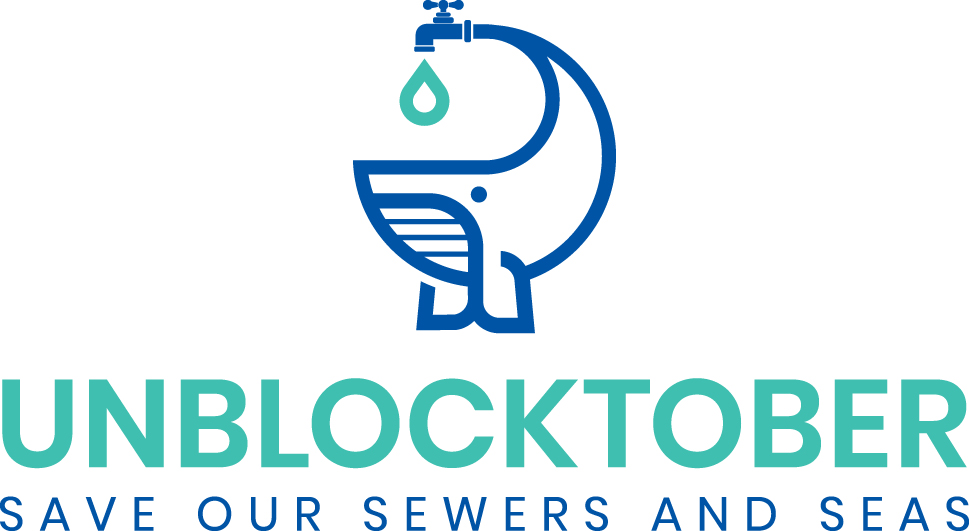
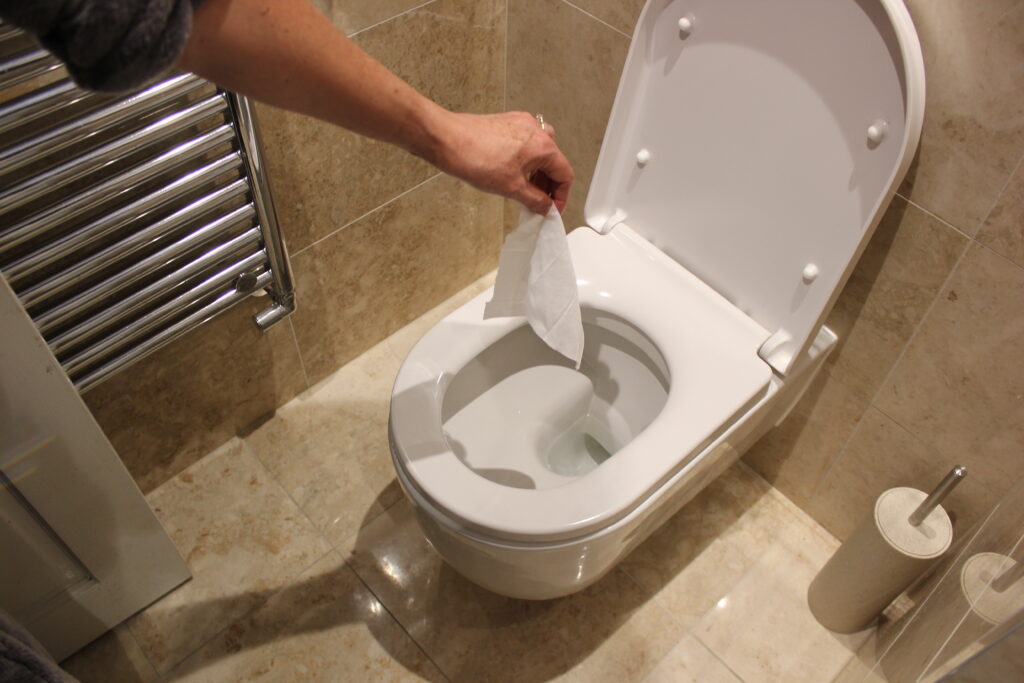

Caption: Before – and after: a wipe flushed down a toilet congeals with other materials, including FOG, to form blockages in pipes. The cost of removing these blockages across the UK is estimated to be over £100m a year.
Millions of tonnes of plastic
Thirdly, wet wipes, in particular, cause pollution and environmental problems that, potentially, will last for thousands of years. Tiny fragments of them contribute to the billions of tonnes of plastic waste escaping into ecosystems around the world.
It is clear, householders can contribute to reducing these risks by taking simple steps. Wipe oils and fats from dishes and pots before washing them. Do not flush wipes and other plastic-based materials – such as teeth floss and sanitary products – down toilets.
The government is planning to ban plastic wipes, possibly as early as 2024. Such a measure cannot come soon enough. In the meantime, we can do our bit to keep our sewer system healthy and protect the planet.
It takes a huge amount of energy to process water so it is fit to drink, then to pipe it our homes – so why waste it through water leaks?
Water companies are regularly criticised for having leaky water mains. But many leaks also occur in and around homes, where property owners are responsible for maintaining water pipes.
Maintaining water pipes properly, and spotting the tell tale signs when leaks occur are the two best ways to ensure water is not wasted and the household’s carbon footprint does not spread.
There are many different ways an ‘escape of water’ can occur. It could be a damaged underground pipe, a leaky tap or shower head, a faulty toilet cistern, or a defective joint in a washing machine hose.
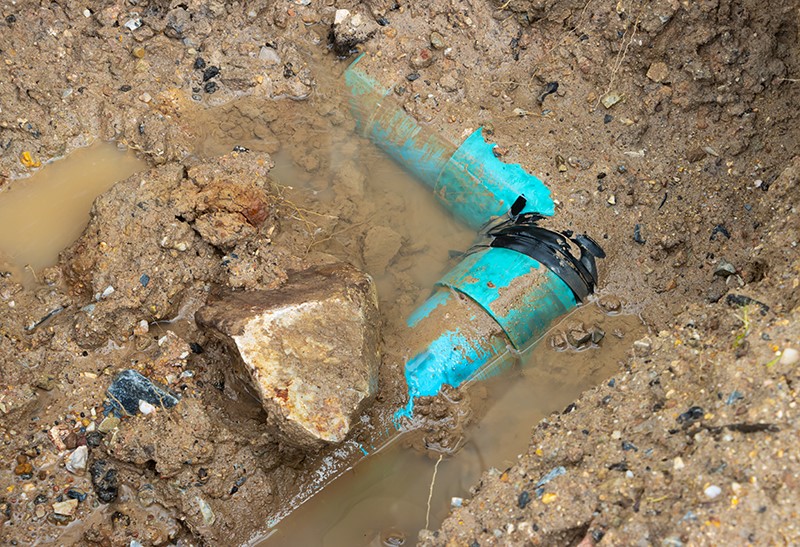
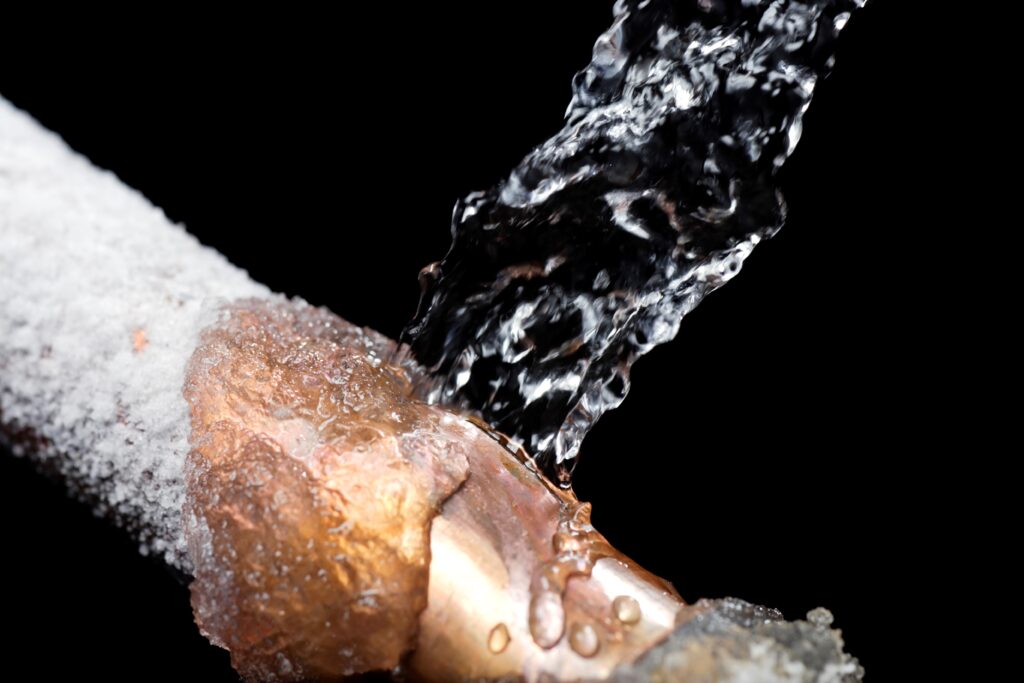
Caption: Leaks in water pipes can be caused in many ways. One common one is non-insulated pipes freezing in cold weather, allowing the water to expand, which damages the pipe, creating the leak. These leaks can be spotted quicky, or they can remain undetected for weeks, if not months.
Millions of litres lost
The amount of water lost can be staggering. WaterSafe says a leaking toilet cistern can waste up to 400 litres of water a day – enough to fill five baths and more than double a family water bill.
Severn Trent believes up to 8 per cent of toilets – most of them dual flush ones – are leaking at any one time.
That adds up to 400 million litres of water lost a day, enough to supply the populations of Edinburgh, Bristol, Manchester, Sheffield, Cardiff, Liverpool and Belfast combined!
The answer, then, is to fix leaky toilets, and anything else that leaks in the home. Have a good look round. Rust under radiators and on showerheads are signs of leaks.
Leaks in pipes buried underground or beneath a property are harder to spot. But here are some ways to detect them:
When it comes to who is responsible for water supply pipes and so their repairs – the property owner or the water company – that depends on where the leak occurs. Understanding who is responsible for what part of the asset is important .
Do your bit to help
In simple terms the water company is responsible for all pipes leading up to the external stop tap on the boundary of a home. The home owner is responsible for the supply pipe leading up to the home and all internal pipes. Our simple guide shows how this works.
The costs of repairing leaks can be very high. The Association of British Insurers puts the average cost of weather-related home insurance claims for burst pipes at £9,300.
Therefore, if households and property owners want to do their bit to help save the planet, control their water bills and save money on repair bills, eliminating leaks should be a priority.
Help with leak detection
ecause water leaks can be very hard to detect, property owners may need expert help in finding them. Depending on the type of home insurance policy they have, they may be able to make a claim access this assistance.
Or they should contact a water supply pipe specialist that can deploy the right leak detection systems and technology to pinpoint the source of the leak and make the right repairs.
There cannot be many people now who don’t realise that saving water is good for the planet and – if a property has a water meter – is also good for the pocket.
As well as preventing leaks, households can reduce their carbon footprints by using less water, or using it more wisely.
Most water companies provide households with advice, including online water saving calculators and expert tips for saving water in the home and outside, by using water wisely in the garden.
Free water saving devices
Many also offer free or subsidised water saving devices, a lot of them through the Get WaterFit platform operated by Save Water Save Money[ .
Water companies that offer free or subsidised water saving devices include:
The free or subsidies water saving devices offered include:
Taking advantage of these offers is a no brainer. Many of them encourage parents to involve children in mini home water saving campaigns, which must be a good thing.
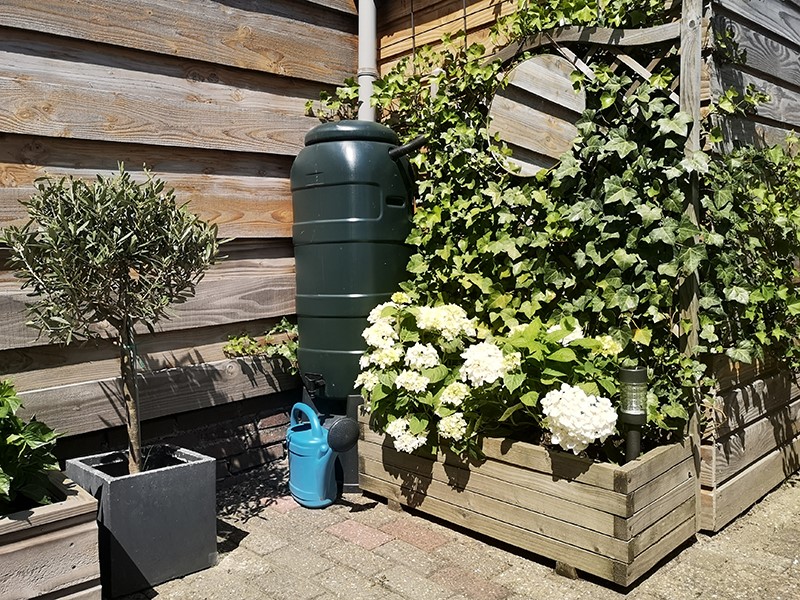
Caption: Installing a water butt is an ideal way to capture rainwater to use on the garden, reducing the amount of treated drinking water you need for that tasks.
Saving the planet – saving money
Because water leaks can be very hard to detect, property owners may need expert help in finding them. Depending on the type of home insurance policy they have, they may be able to make a claim access this assistance.
Or they should contact a water supply pipe specialist that can deploy the right leak detection systems and technology to pinpoint the source of the leak and make the right repairs.
Find out more
Do you have concerns about the condition of your drains?
Do you think you might have a water leak?
Contact Catalyst today. We are experts in solving the most challenging drainage and water supply pipe problems.
Telephone: 0800 870 8080. Email: [email protected].